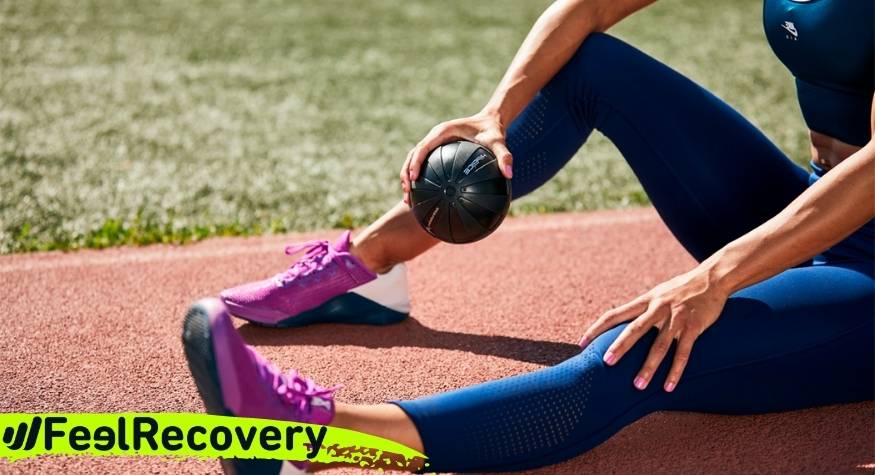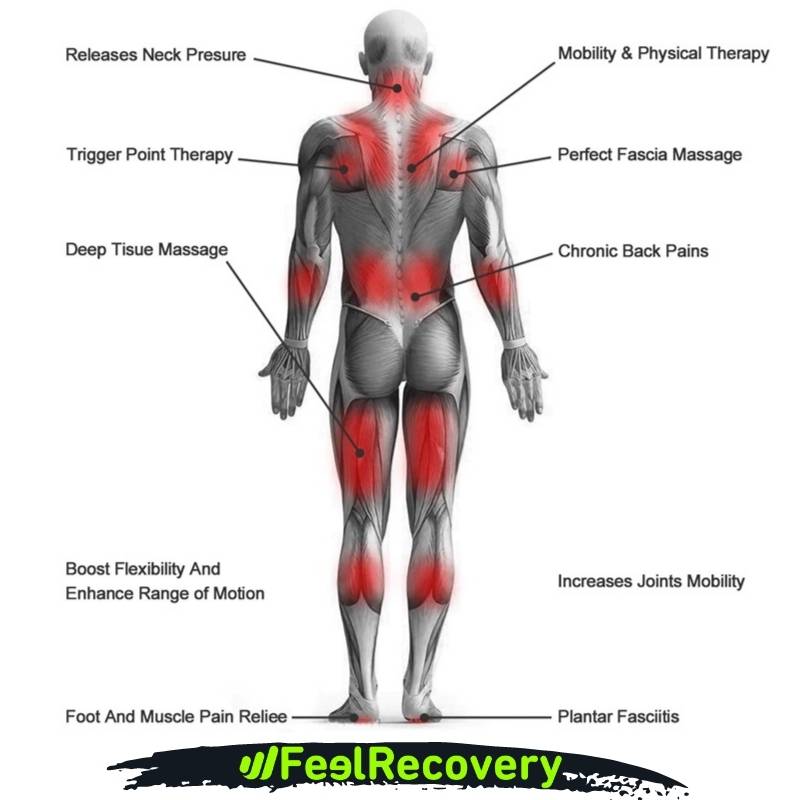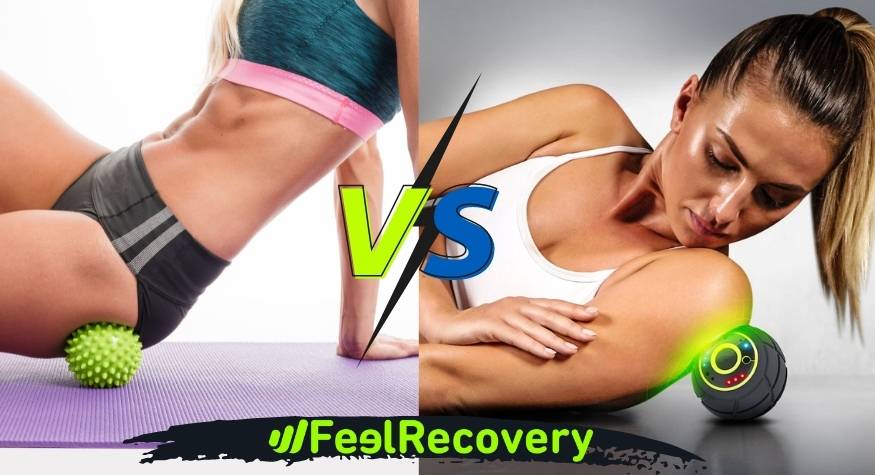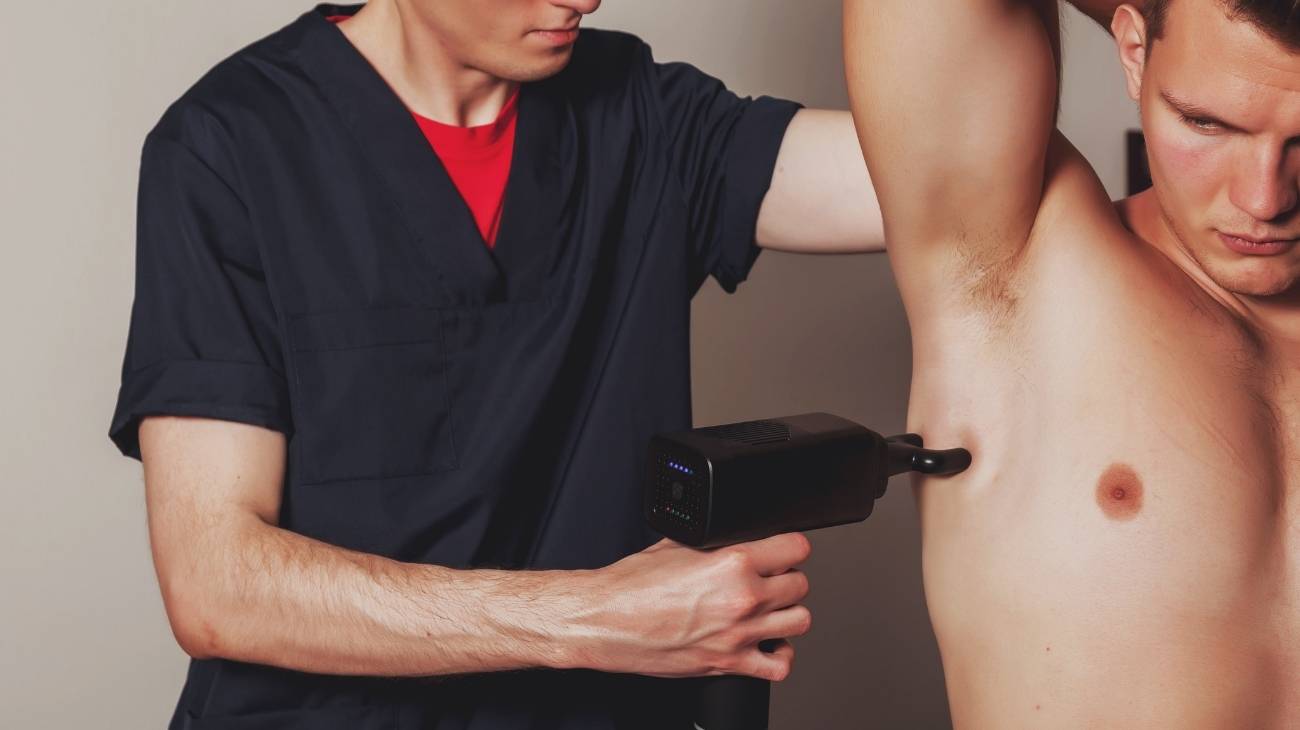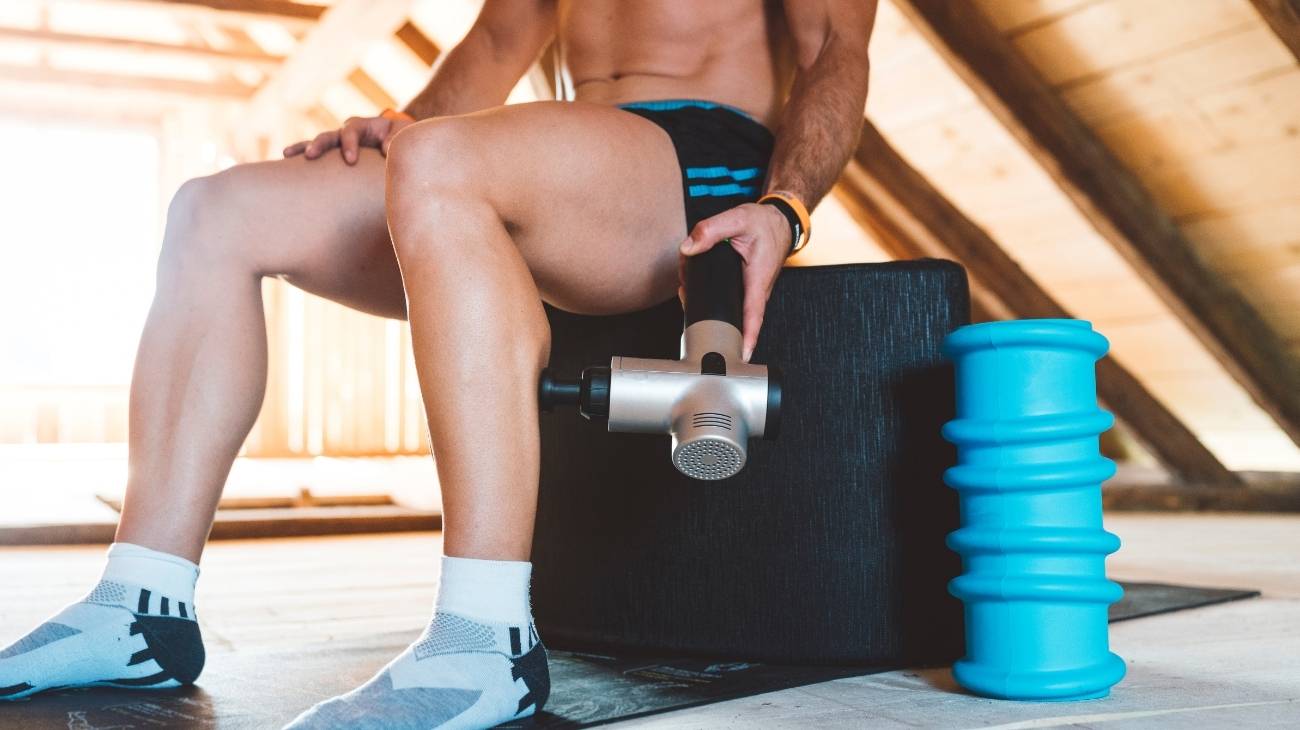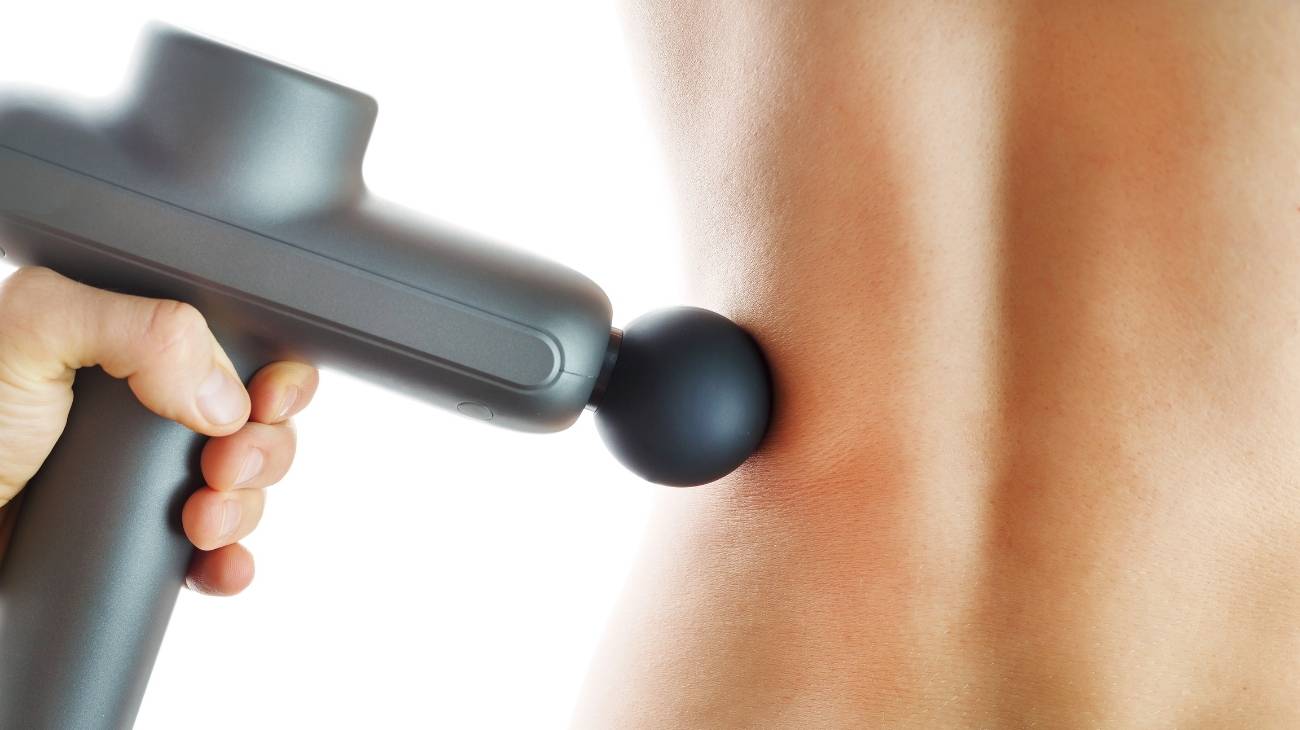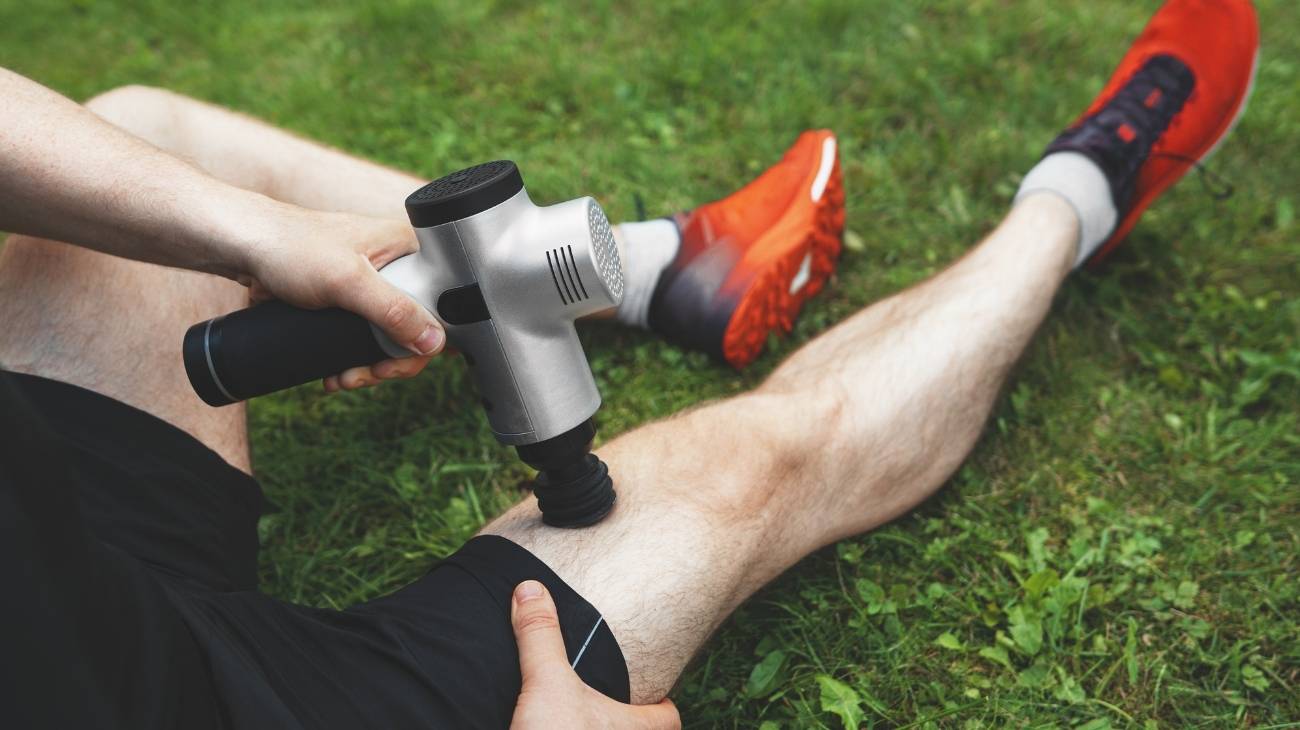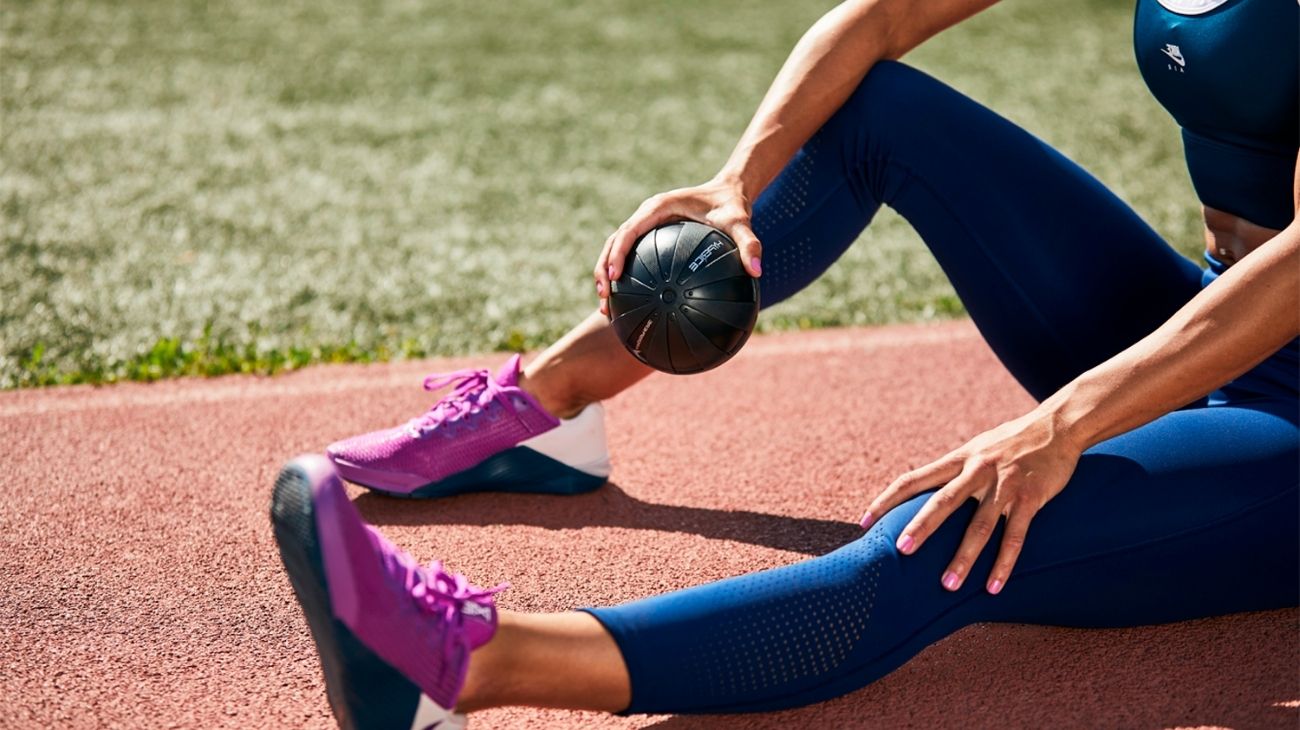- What kind of ailments can be treated with a vibrating massage ball?
- On which areas of the body can we use a vibrating massage ball?
- How to use the vibrating massage balls?
- What are the differences between vibrating massage balls and myofascial massage balls?
- What are the main alternatives to vibrating massage balls for pain relief?
Vibration massage is part of the percussion type of stimulation therapy, but at a micro level, where rapid, pressurised movements are required to cause tissues to relax and stop hurting if they are injured. Before these devices existed, vibrations were performed with the hands.
Nowadays, electric massagers are used because they offer uniformity and are easier to manipulate. We will tell you what kind of ailments you can treat with vibrating massage balls, on which parts of the body it is best to use them and which are the best alternatives to this type of product.
What kind of ailments can be treated with a vibrating massage ball?
Like Lacrosse balls, this vibrating model aims to protect the fascia from tension.
However, it has other benefits for more types of pain:
- Headache: although these balls are not placed on the head or face, headaches and migraines are often related to tension in the neck and shoulders. So when there is no apparent reason for a headache, it is likely that there is some muscle contraction in these parts of the body. By relaxing the muscles, the head also gets relief when drugs have no effect.
- Muscle contracture pain: A contracture can occur in sports, at work and even at home. It is an irregular grouping of muscle fibres that causes pain and stiffness, these signs are treated with constant massages and should not take more than three days for there to be an effective relaxation with balls to be considered a simple temporary contracture.
- Cervicalgia or neck pain: this is a more common complaint than you think, it is due to working long hours in front of a computer, slight blows to the neck, sudden movements and wear and tear from sports training. All you need is the vibrations of this product to restore mobility and prevent a minor injury from triggering headaches and spinal malfunction.
- Lumbalgia or back pain: this is the most common cause of discomfort in the lower back, which bears the weight of a large part of the body. When there is the slightest sign of discomfort, it is important to carry out constant massages with gentle vibrations that you can apply on a daily basis so that a simple discomfort does not turn into potential lumbago, with pain that can last several weeks before it disappears.
- Plantar fasciitis: the feet take the full load of the body, as well as maintaining balance and allowing traction for walking and running. It is normal for them to become fatigued and even more so when there are risk factors such as being overweight. Using the massaging ball daily protects the fascia from fatigue, keeps it resistant and flexible, with a simple daily application you can continue to perform the activities you require.
- Achilles tendonitis: this type of injury is easier to treat with the ball because the Achilles tendon protrudes and is visible. The only thing you should take into account is not to exert too much pressure with the product or stimulate it for more than 10 minutes to avoid further irritation of the tendon structure. It is not recommended when there are injuries such as tears.
- Tensions in trigger points: although this is a small contracture, it occurs in specific and deep areas of the body that generate pain and also leave the skin very tense. An expert physiotherapist and an amateur can easily stimulate these hot spots with the ball to make the tissues relax and get more blood and oxygen flowing again to the damaged area.
- Foot swelling: A good foot massage will help to reduce the signs of vascular problems that are often related to varicose veins and cellulite. The advantage with this product is that you don't need to be an expert to get immediate relief from swelling and pain as long as they are not chronic. In these cases, it is better if you have an expert opinion.
- Chronic muscle aches and pains: when we talk about chronicity, we are talking about types of injuries that have not healed over time. There are millions of testimonies around the world that speak of the benefits of turning to massage when drugs and conventional treatments have failed to alleviate the symptoms of old ailments that continue to limit patients' daily lives.
- Sciatica: this is an ailment present in older adults, athletes and people who have not taken care of their back over the years. As the most recurrent cause is nerve compressions due to contractures, massaging balls can prevent pain in the back, buttocks and legs due to this muscular cause.
On which areas of the body can we use a vibrating massage ball?
Both the conventional and electric models have multiple benefits for each part of the body. Here are the most important benefits for each area of the body.
Neck
As you are going to use your hand to apply the massages with this product, there will be no problem of muscle over-stimulation because you will feel discomfort when this is about to happen:
- Find a place where you can sit comfortably.
- Turn the product on with light vibrations.
- Use one hand to place the product on the skin.
- You do not need to glide the product on the skin in these cases.
- On average, there should be contact for one to two minutes on one spot at a time.
- The entire session should last no longer than five minutes.
- After a break, you can repeat the therapy two or three times a day.
On the arms
The muscles in the arms are less dense, but a little more resistant than in the neck. There should not be too much pressure with your hands either.
- Place the massage ball on a table.
- Sit next to the table.
- Turn on the product and place your arm on the ball.
- Slide your arm back and forth.
- Try to stimulate the biceps brachii, brachioradialis and forearm flexors separately.
- Each muscle should be stimulated for one to two minutes.
- You should not spend more than five minutes doing the entire session.
- Repeat the movements two or three times a day.
On the back
Using the massaging ball on the back is more complex because you will have to do some simple routines, as if it were a Lacrosse type ball.
- Lie on your back on the floor.
- Turn on the ball and place it on one side of your upper back.
- With the support of your feet and hands, try to do forward and backward slides.
- Place the ball on the other side of the back and repeat the slides.
- Lower the ball to the lower back, making smooth linear movements.
- Now place the ball on the other side.
- With this ball you will not be able to do bilateral massages, as you could do with the peanut-shaped ball.
- Each stimulation can last one or two minutes.
- The whole session can be extended for 10 minutes.
- Use caution when massaging the vertebrae.
On the hip and iliotibial band
Once you have finished massaging your back, you can move directly to the hips and the iliotibial band, on the lateral and external side of the thigh.
- Lie on your side on the floor.
- Turn on the massage ball, place it between your hip and the floor.
- With the support of your hands and free foot, perform forward and backward glides.
- Remember that there should be no pain when massaging.
- Take advantage of this position to lower the ball to the thigh.
- The product should touch the skin from the end of the hip and before the knee.
- In a linear fashion, move your body so that the ball rolls over the entire iliotibial band.
- Each stimulation should last one to two minutes.
- The session should last no longer than five minutes.
On the legs
As in the previous section we talked about part of the leg, if you feel too exhausted, you can leave this routine for a new session the next day:
- Lie face down on the floor.
- Turn on the ball and place it between your quadriceps and the floor.
- With the support of your hands and toes, move your body in a linear fashion.
- After a minute or two, place the ball on the other leg.
- Repeat the movements.
- Hamstring work should be done sitting on the floor.
- Bring the electric ball under the hamstrings.
- The leg you are going to massage should be extended and the other leg bent.
- Imagine you are floating, use your hands and the bent leg to move your body back and forth.
- The ball should touch the entire back thigh muscle.
- Move like this for a minute or two.
- Bring the ball up to your calves and use this position to do the same movement.
- Switch the ball to the other leg and repeat the last step.
- You can do the whole session for 10 minutes without rushing.
How to use the vibrating massage balls?
A basic rule in the use of this product is that you should be careful not to feel pain during the massage, discomfort, tingling sensation and cramps. At first, it may feel uncomfortable, but the body must adapt.
It is recommended that you use the electric massage ball all week as long as you vary the positions and do not always touch only one part of the body, as this causes tissue damage such as bruising, contractures and fatigue, in short, the opposite effect is achieved.
The routines we show you can be repeated two or three times a day, but you should reduce this frequency when there is improvement so that the body begins to recover on its own. Each session should last between 5 and 10 minutes on the muscle groups we have mentioned, to avoid sensory over-stimulation.
What are the differences between vibrating massage balls and myofascial massage balls?
Both are products designed for the treatment of myofascial tensions, they have quite similar uses and it is likely that with the electric model you can do any routine as if it were a conventional massage ball.
One of the clearest differences is that with the electric model the benefits on the musculature increase, you can use it to achieve relaxation without doing routines and it can be used by people with less experience in self-massage. On the other hand, conventional balls need to be used with precise techniques, planned movements and with the initial guidance of an expert if you have not had contact with them before.
What are the main alternatives to vibrating massage balls for pain relief?
Although this is a practical and useful product for all kinds of uses, on our website we also have other options that work for relieving muscle aches and pains.
- Pack of myofascial massage balls: these balls are conventional, but for more professional use. These balls are requested by veteran athletes, physiotherapists and sports doctors because they offer a large number of options for use through routines to achieve relief.
- Foam Roller: like the balls, with this product you achieve myofascial release and stimulation of the muscle fibres. The advantage is that you manage to cover a greater amount of tissue in a single pass, but there are trigger points that stimulate better, such as in the dorsal region of the back.
- Manual Roll On Massager: this is the product most similar to the vibrating balls, but it does not require sliding to achieve the benefits. You only need to place the product with your hand on the painful or stiff area to get relief. It was manufactured for domestic use, for people who have no experience in self-massage.
- Electric neck massager: this is a device that uses friction massage and temperature increase, with both techniques it reduces pain due to muscle tension and increases blood flow, which favours muscle recovery after a stressful day.
- Electric foot massager: although the balls are effective in providing stimulation to the plantar fascia, these products are designed to better treat ailments in the sole of the foot and forefoot, including plantar fasciitis.
- Percussion massage gun: a pain relief product for mild physical injuries, it works to inhibit the signals sent by pain receptors to the brain and spinal cord. They offer myofascial treatment through trigger point stimulation.

